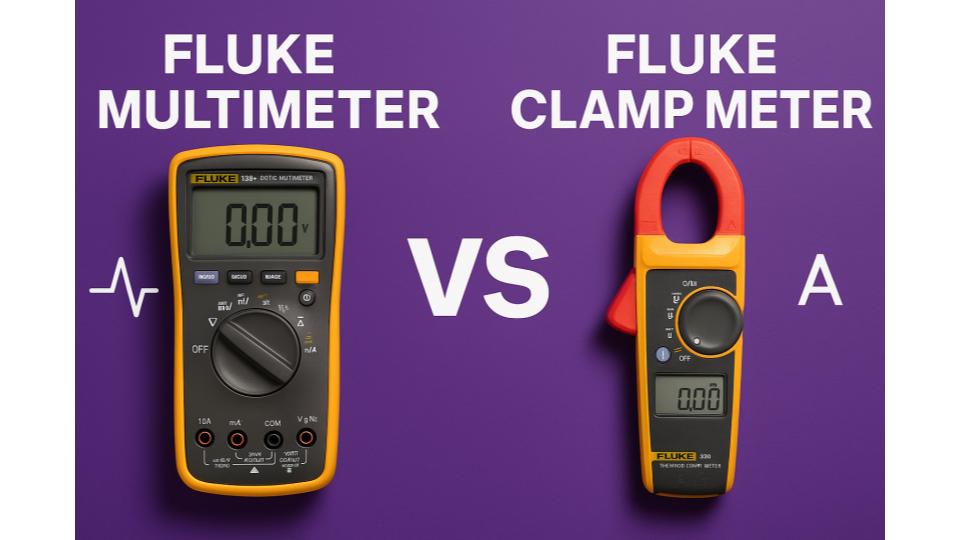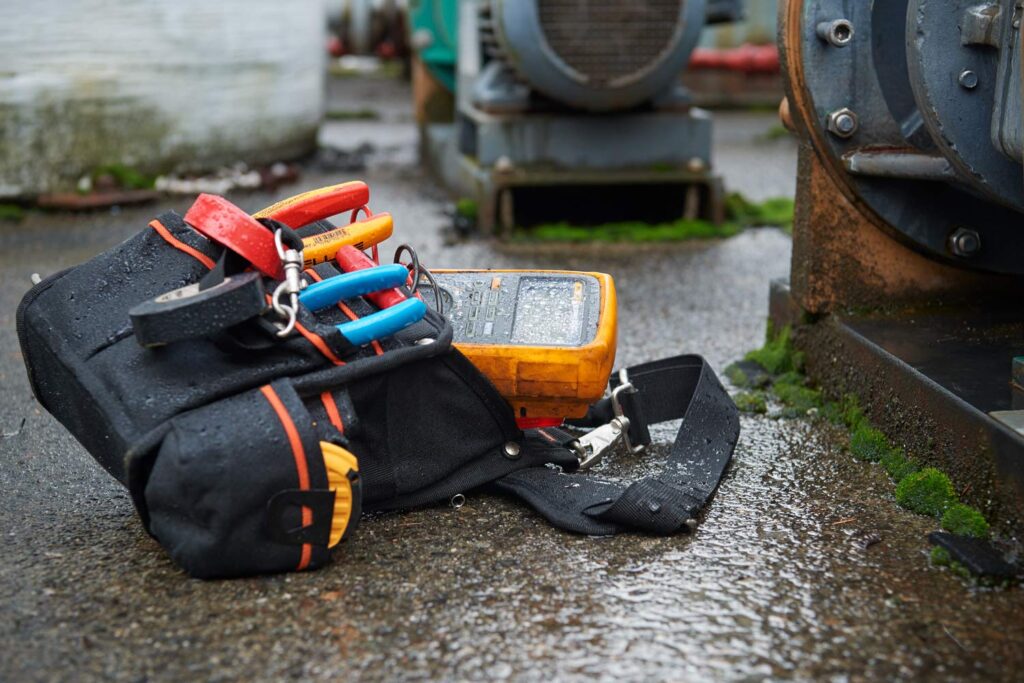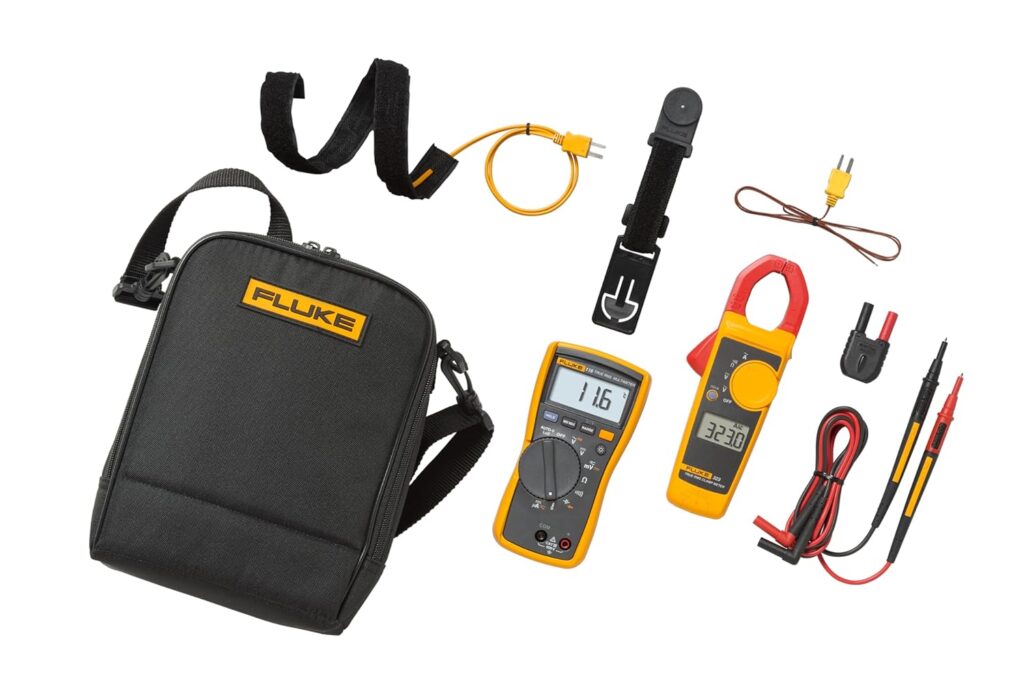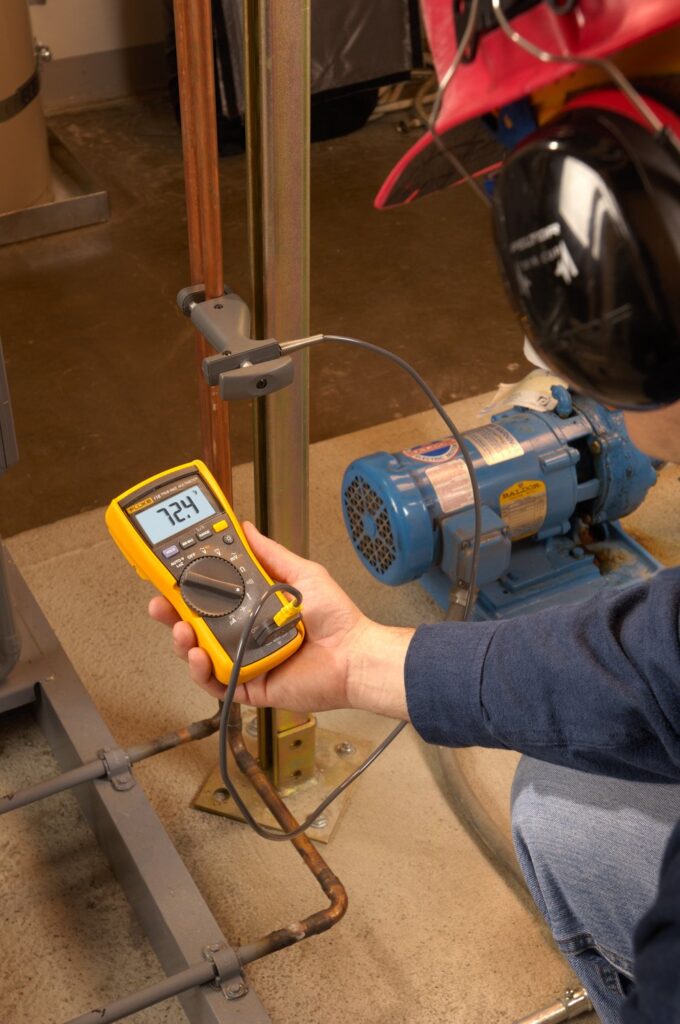When it comes to electrical measurement tools, Fluke is the name professionals trust. But even within Fluke’s own lineup, one question often arises:
Should you get a Fluke digital multimeter (DMM) or a Fluke clamp meter?
🏷️ Fluke Multimeter Deals ⭐⭐⭐⭐
Both instruments measure voltage, current, and resistance, but they do it in very different ways – and each shines in specific situations.
Let’s break down the differences and help you decide which is right for your workbench or tool bag.
🧰 What Each Tool Does
🔶 Fluke Multimeter
A multimeter is an all-purpose electrical tester that measures:
- AC/DC voltage
- Resistance
- Continuity
- Capacitance
- Frequency
- (On advanced models) Temperature and diode tests
Fluke’s multimeters, like the Fluke 15B+ or Fluke 87V, are designed for precision measurements. They connect to circuits using test leads, which makes them ideal for low-voltage or control circuit diagnostics.
🔷 Fluke Clamp Meter
A clamp meter, like the Fluke 323 or Fluke 376 FC, measures current (amps) without breaking the circuit. It uses a clamp jaw that senses the magnetic field around a conductor to determine the current flow.
In addition to current, modern clamp meters also measure:
- AC/DC voltage
- Continuity and resistance
- (Some models) Inrush current and True RMS
In short:
- A multimeter touches the circuit directly.
- A clamp meter measures current without contact, offering speed and safety.
⚙️ Key Differences Between Fluke Multimeter and Clamp Meter
| Feature | Fluke Multimeter | Fluke Clamp Meter |
|---|---|---|
| Primary Function | Voltage, resistance, and precision measurements | Current measurement without breaking circuit |
| Measurement Method | Direct (using probes) | Indirect (magnetic induction) |
| Current Range | Up to ~10 A (using probes) | Up to 1000 A+ (via clamp) |
| Voltage Measurement | Yes | Yes |
| Resistance/Continuity | Yes | Yes |
| Safety | Requires circuit contact | Safer, non-contact current readings |
| Accuracy (Voltage) | Higher | Slightly lower |
| Speed for Current Measurement | Slower | Instantaneous |
| Ideal For | Electronics, control systems, low-voltage troubleshooting | Electrical panels, HVAC, industrial power systems |
🧭 When to Use Each Tool
✅ Use a Fluke Multimeter When:
- You need precise voltage or resistance readings.
- You’re troubleshooting circuits, sensors, or control boards.
- You want to measure small current (under 10 A).
- You’re testing electronic components or battery circuits.
Example: Measuring the voltage drop across a resistor, verifying sensor output, or checking power supply stability.
✅ Use a Fluke Clamp Meter When:
- You need to measure current safely and quickly.
- You work on energized or high-current systems (e.g., switchgear, HVAC, industrial panels).
- You need to check inrush current or motor startup load.
- You want to measure current without disconnecting wires.
Example: Checking current draw of an air conditioner compressor or monitoring load balance across three-phase lines.
🧪 Real-World Example: Fluke 15B+ vs Fluke 323
| Model | Fluke 15B+ Multimeter | Fluke 323 Clamp Meter |
|---|---|---|
| AC Voltage Range | Up to 1000 V | Up to 600 V |
| Current Range | 10 A (probe-based) | 400 A (clamp-based) |
| Resistance | Up to 40 MΩ | Up to 4 kΩ |
| Display Count | 4000 | 4000 |
| Accuracy (Voltage) | ±0.5 % | ±1.5 % |
| Safety Rating | CAT III 600 V / CAT II 1000 V | CAT III 600 V |
| Best For | Precision electrical measurements | Fast current diagnostics |
| 💳 Pricing | 💲Check price | 💲 Check Price |
In practice:
If you’re an electronics technician working on control boards, a Fluke multimeter is indispensable.
If you’re an electrician checking current draw on live panels, a Fluke clamp meter saves you time and keeps you safer.
💬 User Feedback from Online Forums
From EEVBlog Forums:
“Fluke multimeters are surgical instruments – the clamp meters are your work gloves. You need both if you’re serious about electrical work.”
From Reddit r/ElectricalEngineering:
“For field work, I can’t live without my Fluke 323. But for bench work or component testing, I always reach for my Fluke 17B+.”
From HVAC-Talk Forums:
“The clamp meter is my daily driver for current checks. My multimeter only comes out when something doesn’t look right and I need numbers that I can trust.”
💡 The Best of Both Worlds
Many professionals carry both tools. In fact, Fluke even sells combo kits (like the Fluke 116/323 HVAC Kit) that pair a precision multimeter with a clamp meter.
Why? Because they complement each other:
- The multimeter gives detailed, accurate readings.
- The clamp meter gives safe, fast current diagnostics.
Together, they cover virtually every electrical measurement scenario – from microamps to megawatts.
✅ Final Verdict
| User Type | Recommended Tool | Why |
|---|---|---|
| Electronics Hobbyist or Technician | Fluke Multimeter | Precise, reliable, and ideal for low-voltage work |
| Electrician or Field Engineer | Fluke Clamp Meter | Safe, fast current measurement in live circuits |
| Industrial Maintenance / HVAC | Both | Each serves a unique purpose; together they’re unstoppable |
In short:
A Fluke multimeter gives you accuracy and detail, while a Fluke clamp meter gives you speed and safety.
If your budget allows, owning both is the best investment an electrical professional can make.







